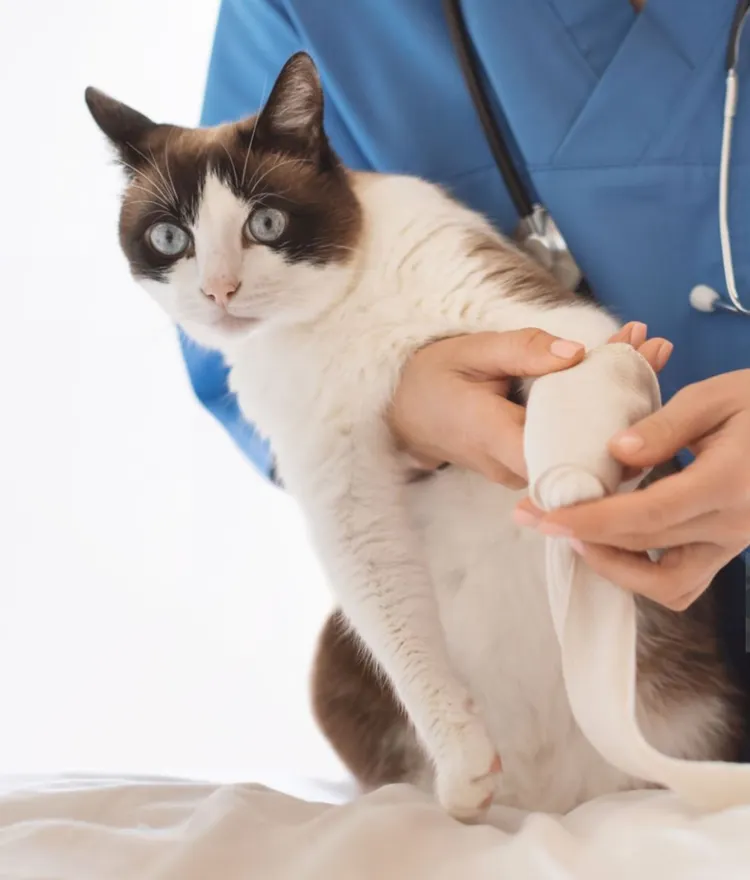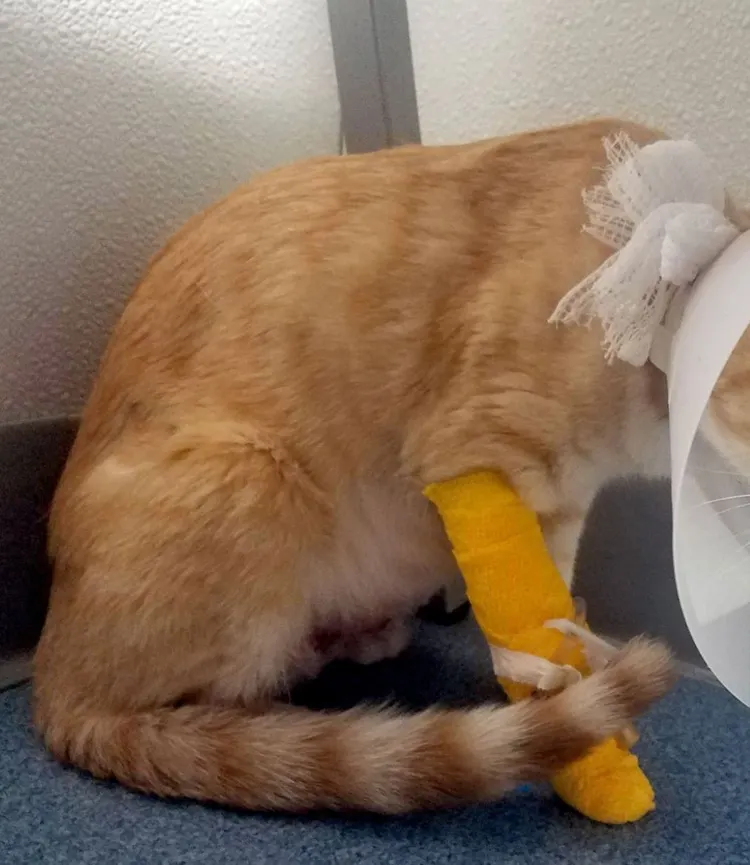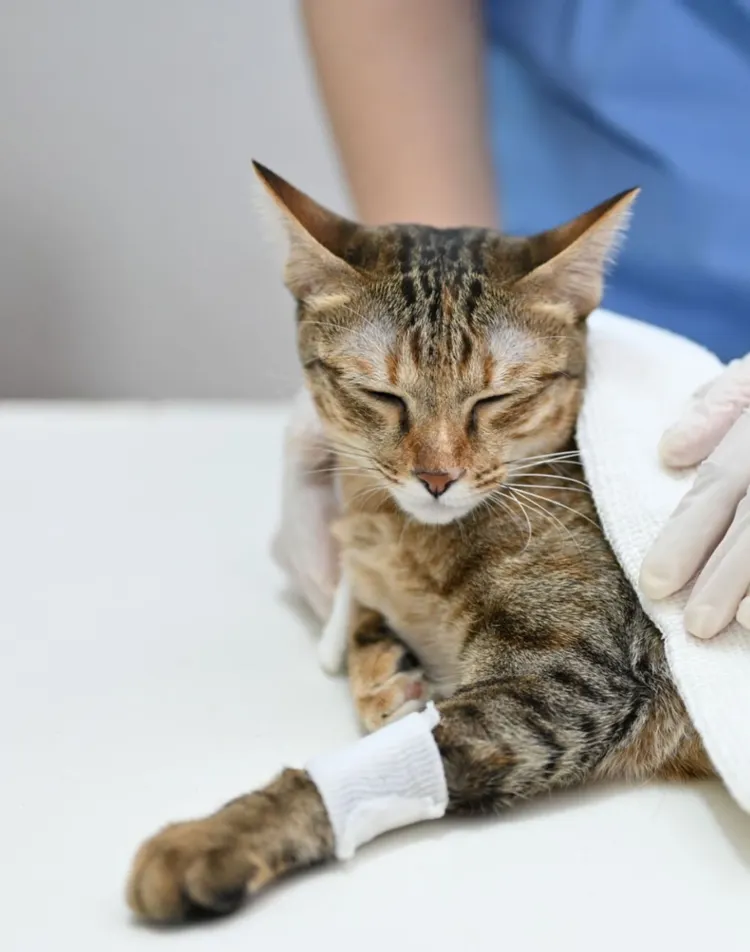When your usually nimble cat suddenly refuses to walk or holds a leg awkwardly, it’s enough to make any pet parent’s heart drop. Broken legs in cats are more common than you’d think, and while they are certainly distressing, knowing the signs and the proper steps to take can make all the difference in your cat’s recovery. This guide will walk you through how to recognize a cat’s broken leg, how to provide immediate first aid, and how to care for your feline friend in a sustainable, eco-friendly way during their recovery.
How to Recognize a Broken Leg in Cats
Cats are agile creatures, known for their ability to leap and balance. However, accidents can still happen, and a broken leg is one of the most common injuries seen in cats. Recognizing the signs of a broken leg is crucial for getting them the help they need as quickly as possible. Here are the common symptoms:
1. Limping or Refusal to Put Weight on the Leg
The most obvious sign of a broken leg is limping or complete avoidance of putting any weight on one of their legs. This is a natural response to pain and injury.
2. Swelling
You may notice that the injured leg is swollen, which could indicate a fracture or break. This is especially likely if the swelling is accompanied by visible discomfort or reluctance to move.
3. Pain or Vocalization
If your cat cries out when the injured leg is touched or tries to move, this is a clear sign of pain, and a fracture or break should be considered. Cats are typically stoic creatures, so any loud vocalization is a sign of serious discomfort.
4. Visible Trauma
In severe cases, there may be obvious signs of trauma, such as a visible bone, cuts, or bruising. If there is a noticeable deformity in the limb’s shape, it’s likely the leg is broken.
5. Hesitation to Jump or Play
Even if your cat doesn’t limp outright, they may show signs of reluctance to jump or engage in their usual activities. Cats are often subtle when expressing pain, so look for any signs of withdrawal or hesitation in their behavior.
It’s important to note that some symptoms, like limping or hesitation to move, could also indicate other injuries or illnesses, such as sprains, arthritis, or joint problems. A veterinarian is essential in determining the exact cause of your cat’s discomfort.

First Aid for a Cat with a Broken Leg
If you suspect your cat has a broken leg, immediate veterinary attention is necessary. However, there are a few things you can do at home to stabilize your pet and make them more comfortable while waiting for professional care.
Step 1: Handle Your Cat with Care
A cat with a broken leg will be in pain and might act defensively. Approach them calmly and gently to avoid causing them additional stress. Speak softly to reassure them and use slow movements to pick them up.
Step 2: Immobilize the Leg
To prevent further injury, you may need to immobilize the broken leg temporarily. Here’s how you can make an eco-friendly makeshift splint:
- Materials: Use a clean, soft material like a cloth or eco-friendly gauze, and for the splint itself, you can use something sustainable, such as bamboo chopsticks or a cardboard strip. Avoid plastic or synthetic materials where possible.
- Application: Gently wrap the cloth around the injured leg, and place the makeshift splint alongside it. Secure the splint loosely with more cloth, ensuring it’s snug enough to immobilize but not so tight that it restricts circulation.
Step 3: Transporting to the Vet
When transporting your cat to the veterinarian, make sure they’re secure and comfortable. Use a sturdy carrier, and line it with a soft, eco-friendly blanket or towel made from sustainable fabrics like organic cotton or recycled materials. This provides comfort and support without adding to your environmental footprint.
The Importance of Veterinary Care
A broken leg is a medical emergency that requires professional veterinary care. No amount of first aid will substitute for proper diagnosis and treatment, which might include X-rays, surgery, or the application of a cast. Cats, especially, need proper alignment of the bones to ensure successful healing.
Tips for Safely Transporting Your Cat:
- Keep Them Calm: Cats in pain are more likely to become agitated. Speak softly, and try to minimize loud noises or sudden movements.
- Use a Sturdy Carrier: A soft-sided carrier may not provide enough support for a cat with a broken leg. Opt for a hard-sided carrier or a sturdy box to keep them as still as possible during the trip.
- Avoid Handling the Injury: Once the leg is immobilized, avoid touching or moving the injured limb. Focus on keeping your cat calm and getting them to the vet quickly.
Recovery at Home: Eco-Friendly Tips for a Comfortable Healing Space
Once your cat has received veterinary care, their recovery will mostly take place at home. Creating a comfortable, eco-conscious environment can help them heal faster while reducing your environmental impact.
1. Create a Soft, Comfortable Bed
Your cat will need plenty of rest, and having a cozy space to recuperate is essential. Consider creating a DIY bed using sustainable or recycled materials. Old t-shirts, organic cotton blankets, or repurposed fabric scraps can make a soft, supportive bed. You can also purchase eco-friendly pet bedding made from recycled materials or sustainably sourced fibers.
2. Restrict Their Movement
Cats with broken legs need to limit their movement to avoid straining the healing limb. Use eco-friendly solutions like upcycling old baby gates or repurposing wooden crates to create a small, confined area where they can rest.
3. Maintain a Clean Environment
Keeping the recovery area clean is essential to avoid infections. Use non-toxic, eco-friendly cleaning products to wipe down surfaces and clean the space regularly. You can find cleaning solutions made from natural ingredients like vinegar, baking soda, and essential oils that are safe for pets and environmentally friendly.
4. Provide Comfort with Reusable Heat Pads
Heat therapy can help soothe your cat’s sore muscles and promote healing. Opt for reusable heat pads or hot water bottles made from natural rubber. These can be placed under your cat’s bedding to provide gentle warmth during their recovery.
Long-Term Care and Healing
Caring for a cat with a broken leg requires patience and attention. Here’s how to ensure their recovery goes smoothly while keeping the environment in mind:

1. Eco-Friendly Nutrition
Your cat’s diet plays a crucial role in their healing. Look for high-quality, sustainably sourced cat food that provides the necessary nutrients for bone repair. A diet rich in protein, calcium, and omega-3 fatty acids can promote faster recovery. Consider brands that prioritize sustainable practices and packaging, or make homemade cat food using organic, ethically sourced ingredients.
2. Use Reusable Bandages and Wraps
If your cat requires bandages during their recovery, opt for reusable or biodegradable wraps. Some companies offer reusable bandages made from sustainable materials that can be washed and used again, reducing waste.
3. Sustainable Litter Solutions
While your cat is healing, they may need to use a litter box more frequently. Choose biodegradable, eco-friendly litter options such as those made from recycled paper, wood, or natural corn. These alternatives are better for the environment and provide a more sustainable option than traditional clay-based litter.
Preventing Future Injuries
To avoid future accidents, consider making your home and yard a safer environment for your cat. Here are some eco-conscious tips for cat-proofing your space:
- Use Natural Deterrents: If your cat is prone to climbing or jumping in risky areas, use natural deterrents like citrus sprays or repurposed materials to block off these spaces.
- Create Safe Play Areas: Designate areas in your home where your cat can play safely. Use eco-friendly toys made from natural fibers like wool or hemp, and ensure the play area is free from potential hazards like sharp objects or high furniture.
- Yard Safety: If your cat spends time outdoors, make sure your yard is safe. You can create secure outdoor spaces with recycled materials to build a cat run or use sustainable fencing options to keep them away from dangerous areas.
A broken leg in a cat is a serious injury, but with the right knowledge and care, your feline friend can make a full recovery. By using eco-friendly materials and sustainable practices, you can not only ensure your cat’s comfort and safety but also reduce your environmental footprint.




Hello! I could have sworn I’ve been tto this blog before but after
going through somme of the articles I realized it’s new to me.
Anyhow, I’m definitely happy I came across it and I’ll be book-marking it and checking back
often!